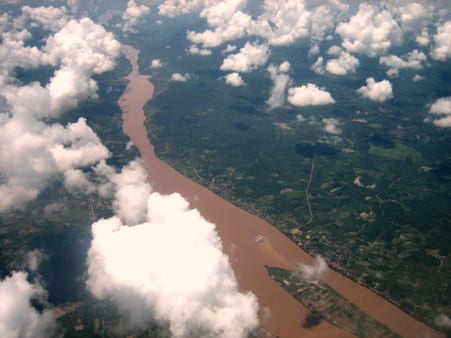The River Between is incredibly compelling – I completed it within a few hours whilst waiting for a ferry to cross the Volta River in Ghana, which somehow seemed appropriate given the setting and theme of the novel! The story tells of the division between the two communities of Makuyu and Kameno, which are set in the ridges of rural Kenya under colonial rule. A river separates the two villages. Despite differences between them, they rub alongside each other fairly peacefully until Christian missionaries start to settle nearby.

Battles lines are drawn up between Joshua, a Kenyan who preaches Christianity and the need to coexist peaceful with the Whites, and Kobonyi, who encourages the community to use force to drive out the influence of Christianity and hold onto their tribal traditions such as circumcision. The topic of female circumcision is particularly powerfully discussed throughout the novel – it is presented as embedded in the very identity of the people; indeed, it seems to be to some extent, a symbol of the tribe.
The protagonist of the story, Waiyaki, is told a prophesy by his father that he is going to play a ‘messiah-like’ role in saving the communities from destruction, through holding an understanding of both the ways of Christianity, and tribal practices.
‘Go to the Mission place. Learn all the wisdom and all the secrets of the white man. But do not follow his vices. Be true to your people and the ancient rites.’ (Chapter 5, Chego).
One interesting factor in this novel, is that there are no white characters at all – we are only shown the impact of ‘whiteness’ and Christianity upon indigenous people; instead the impact of ‘whiteness’ is shown through the changes in attitudes of various characters.
Waiyaki is the voice of education in the novel, and I certainly found the way in which Thiong’o presented Waiyaki’s drive for extending the basic education of children in the region incredibly inspiring and motivating. Waiyaki recognises that change in the country is unstoppable, and that people need to learn to adapt to change if any of their culture is to be preserved.

However, rather than offering clear advocacy of the need for adaptation, understanding and moderation, the novel ends in a somewhat pessimistic way. Waiyaki ultimately fails in his quest to use education as the tool to unite people in the way that he had hoped, and the divisions remain. It seems that people are drawn to one extreme or the other, identifying the extremities of emotions exposed, rather than taking a more moderate position.
The River Between can also be recognised as a powerfully love story, demonstrating the sacrifices that often have to be made in order to be completely committed to a person – Waiyaki’s failure is partly due to his love of Nyambura (who in a Romeo and Juliet style drama, is from the ‘opposing’ group) – sadly, instead of drawing the two groups together their fate is somewhat less hopeful.
Cat Davison 11th October 2017
One thought on
Leave a Reply
You must be logged in to post a comment.


WOW VERY FANTASTIC